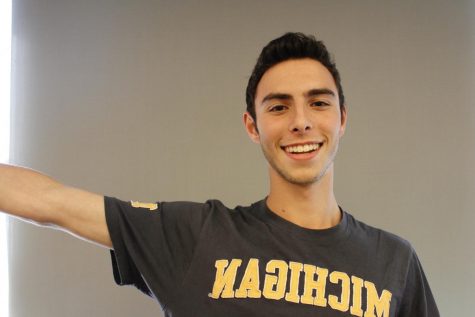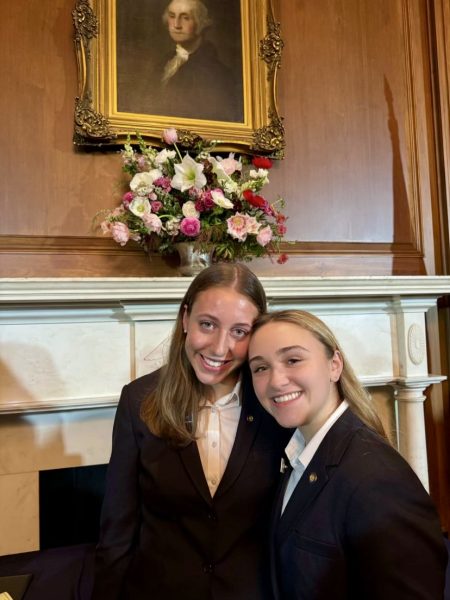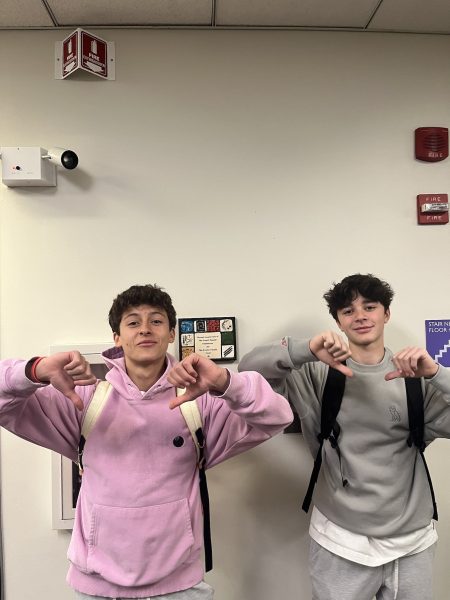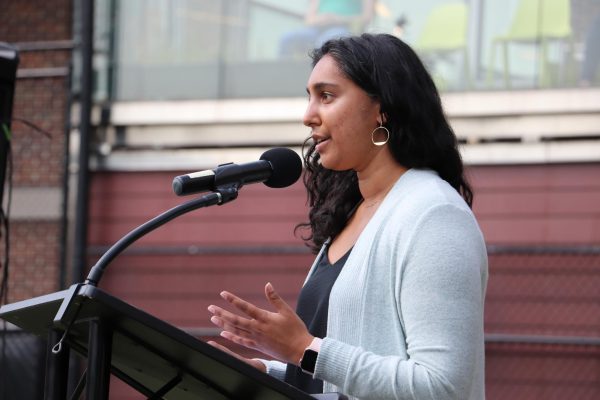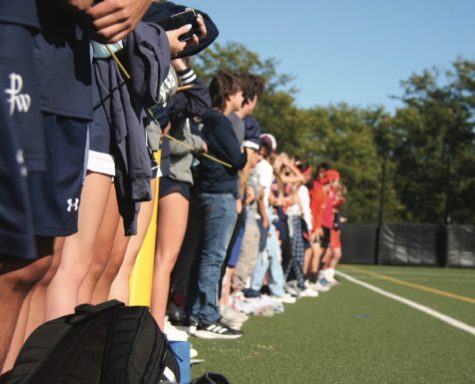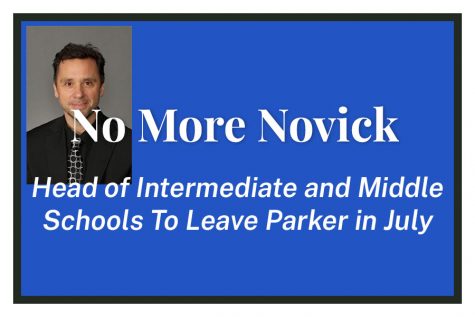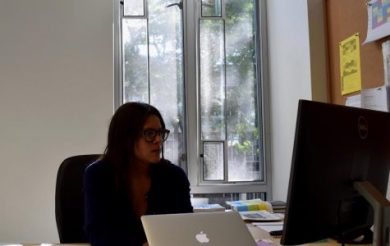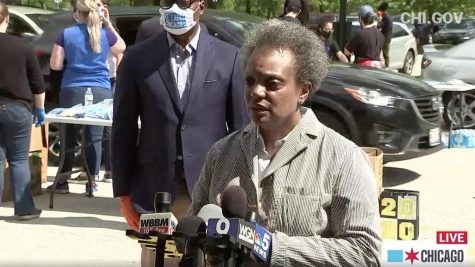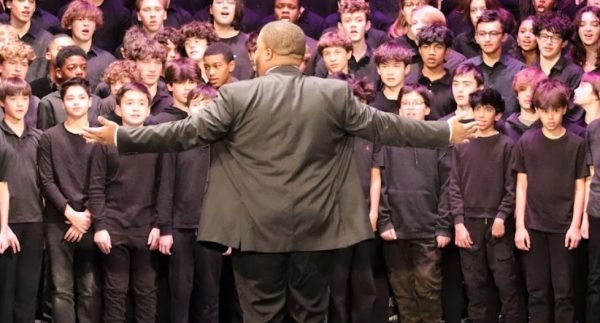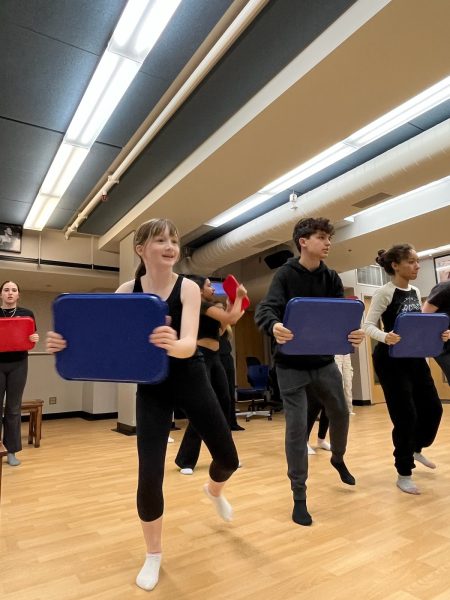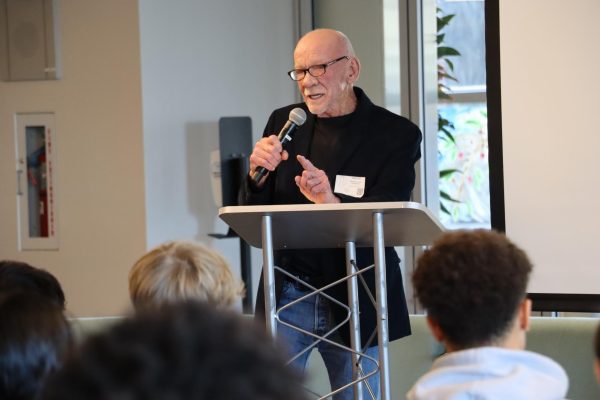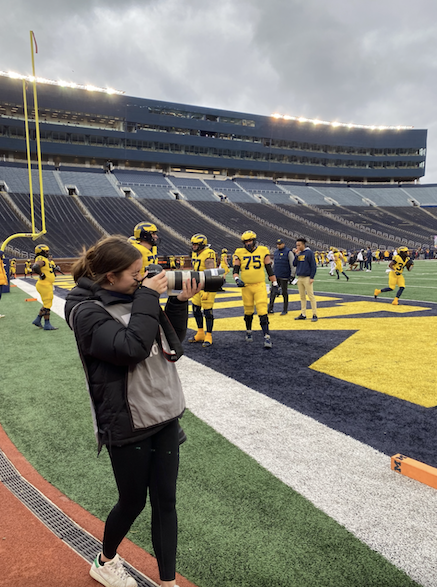A Tale of Two Parkers
Ideas Travel Back East from Parker San Diego
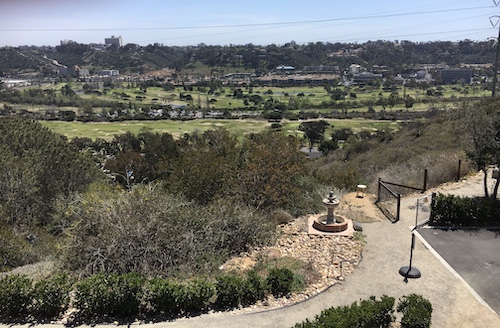
Photo credit: Ian Shayne
The Francis Parker School in San Diego overlooks vast greenery.
Few traditions are as distinctly American as the westward passage of ideas.
In the 1820s, Brigham Young journeyed west to the Utah Territory to spread the controversial tenets of Mormonism. Two decades later, “New York Morning Post” editor John O’Sullivan coined the phrase “Manifest Destiny,” an idea that traveled west with the American pioneers in the hope of expanding the already vast new republic. At the turn of the century, as America, having dominated its continent, ventured across the ocean, 33-year-old Chicagoan Clara Sturges Johnson arrived on the sunny shores of San Diego. Inspired by her nieces’ experiences at Francis W. Parker School in Chicago, she traveled west to transmit the doctrine of progressive education to the children of the Golden Coast.
One hundred and seven years later, a painting of Johnson, with a Mona Lisa-esque smile and a young child embracing her left shoulder, sits in a gold frame near the main office of the institution she and her husband established, the Francis Parker School in San Diego, California. Far from the soft snow blanketing Clark St. and the warm alcove fireplace lies a sunny campus towering over a gaping valley with open-air classrooms and Spanish revival architecture.
While the school’s exterior differs greatly from that of Francis W. Parker in Chicago, many of the school’s traditions are similar, including their own Big Siblings-like ritual. “There’s a big thing that seniors do called KinderBuddies,” Parker San Diego senior Umit Suri said. “Seniors are assigned a kindergartener, and those kindergarteners will then come periodically to campus, and we’ll do events with them. It’s sort of like a bridge between the Lower School and the Upper School. A lot of people enjoy it. It’s one of the events that a lot of seniors look forward to.”
I believe the role of the ASB is to be like the bridge between administration and the student body.
— Umit Suri
Suri, who came to Parker in sixth grade, serves as president of the Associated Student Body, an institution similar to Parker Chicago’s student government but, unlike the Chicago school’s student government, is a class. “I believe the role of the ASB is to be like the bridge between administration and the student body,” Suri said. “We do a lot of stuff when it comes to bringing in administrative bodies into class, talking to them in order to get information so that we can relay information to the student body.”

The inclusion of the sliding glass doors and open air classrooms celebrate William Templeton Johnson’s original 1913 design.
As president, Suri is the ex officio student body representative, so, like Parker Chicago senior and Student Government President Matthew Turk, he attends frequent meetings with his school’s administration, particularly the head of the Upper School.
The similarities between the schools’ student governments go beyond the responsibilities of their respective presidents. In April, Parker San Diego holds Elections’ Week, when students campaigning for president; vice president, similar to Parker Chicago’s Executive Advisor; treasurer; class representatives, an appointed position at Parker Chicago; and director of events, similar to the Director of Committee Affairs at Parker Chicago, make speeches and posters. Unlike at Parker Chicago, the current president, vice president, and faculty advisors (as opposed to the Cabinet-elect) conduct the appointment process. Despite the larger student population size (130 current seniors at Parker San Diego versus 84 at Parker Chicago), elections for top positions are about as competitive as those at Parker Chicago. For example, Suri was one of five candidates for president, while Turk was one of four.
Also, in spite of the larger population, Parker San Diego has similar class sizes to Parker Chicago. “The smallest class I have is around 10 kids, and the largest I have is 22, being ASB,” Suri said. “I know this one kid who had three kids going into his Chinese class at the beginning of the year, but two kids dropped, so he’s the only kid in that class. Classes can be really small, and the max you’re going to get is like 20, 22. There have been instances when you’ve been stuck in a class with 27, and then the school separated it into two separate blocks and cut down the class size.”
Seventy-three-year-old woodworking teacher Barry Cheskaty, who has taught at Parker since 1976—seven years after the school’s first post-World War II high school graduation and five years after the opening of the Linda Vista Campus, has witnessed the considerable growth of the student population. “In size, when I first started, I believe the graduating senior class was 32 kids,” Cheskaty said. “Now, it’s an average of 125 per grade level. We used to be what we called The Little Family School. Now, we’re so big that we no longer use the word ‘family,’ which I kind of miss. The school is bigger. It’s a little less personal because it’s difficult to know everyone. For me, for instance, of the entire high school, only 32 kids can take woodshop every year, which certainly limits my exposure to a great number of students.”
We used to be what we called The Little Family School. Now, we’re so big that we no longer use the word ‘family,’ which I kind of miss.
— Barry Cheskaty
The student population is far from the only change the school has experienced since 1976. “If you were to see this campus, there’s not a single structure on this campus that was here in the fall of ‘76 when I arrived,” Cheskaty, the longest-serving current teacher at the campus, said. “The campus has been completely remade with all new buildings. The oldest building now is the Middle School that opened in 1987. That is the oldest facility on this property. It’s a beautiful campus.”
The Francis Parker School in San Diego has both a lower school campus in the Mission Hills neighborhood and a middle and upper school campus in Linda Vista, about 15 minutes apart. On the Linda Vista property sits a new two-story parking garage; open-air classrooms with sliding glass doors, modeled after the sliding wooden doors Clara Johnson’s architect husband, William Templeton Johnson, constructed on the original campus; and a football field, where the Francis Parker Lancers play.
Football is not the only sport exclusive to Parker San Diego. Unlike Parker Chicago, the school boasts a male volleyball team and both male and female water polo teams for whom the school plans to construct a swimming pool. “Parker is known to be a very academic school,” Suri said, “but they’ve been putting a lot of focus on athletics lately, which is very cool.”
Parker San Diego’s athletic rivals are La Jolla Country Day and The Bishop’s School. “In San Diego, there is a big private school culture,” Suri said, “and Parker, Bishops, and La Jolla Country Day dominate that field.”

The inclusion of the sliding glass doors and open air classrooms celebrate William Templeton Johnson’s original 1913 design.
Given San Diego’s liberal leanings, Parker San Diego has an overwhelmingly liberal student population but, unlike its Chicago namesake, has a Young Republicans Club, evidence of a larger contingent of proudly conservative students. “I remember when Trump was elected, not a lot of people were very happy on campus,” Suri said. “We tend to lean more liberal, but that doesn’t mean that we don’t have our fair share of conservatives. The community does a really good job of respecting each others’ ideas. Although conservatives are in the minority, we’re very accepting of all viewpoints.”
We tend to lean more liberal, but that doesn’t mean that we don’t have our fair share of conservatives. The community does a really good job of respecting each others’ ideas.
— Umit Suri
Not only does the school emphasize diversity of thought but also diversity of race and sexual orientation. Every year, the school engages in the Day of Understanding, similar to Parker Chicago’s Gender Week, with mostly student-led workshops about different diversity groups. On Wednesdays, students get a break from their typical 7:45 a.m. start time. From 7:30 a.m. to around 8:45 a.m., 15 minutes before Wednesday classes start, faculty meetings occur, and almost monthly, the conversation revolves around diversity and inclusion. Often, the faculty invites students of diverse backgrounds to share their experiences at school. “We have a really diverse population here at Parker,” Cheskaty said. “We try to be as helpful, as accommodating as we can to make them feel comfortable.”
While the school is pushing for inclusion, Cheskaty believes that some socioeconomic status issues will always haunt the school. “It can be difficult for some of them to completely feel comfortable simply because of their socioeconomic backgrounds,” Cheskaty said about scholarship recipients. “You have bright and successful students come in, who can compete academically with their fellow classmates but can feel inadequate because some of their friends might drive nice cars and have beautiful clothes to wear, even though we have uniforms. I can see how it might be more of a challenge for them sometimes to really feel as equals in the school. Perhaps that is an issue we may never resolve.”
You have bright and successful students come in, who can compete academically with their fellow classmates but can feel inadequate because some of their friends might drive nice cars and have beautiful clothes to wear, even though we have uniforms.
— Barry Cheskaty
Many Parker Chicago students encounter similar problems. The average full tuition (per student K-12) at Parker San Diego is $30,054.29 compared to $35,550.71 at Parker Chicago. Parker San Diego’s tuition does not cover global trips, an annual tradition in which some students elect to participate for a week during the school’s two-week March break. Destinations of global trips include India, South Africa, Fiji, Colombia, and Eastern Europe. Most of the other students engage in Interim Week, similar to Cookies at Parker Chicago, but instead of student-led courses, the teachers teach the non-academic courses. “Last year, I did songwriting,” Suri said. “Teachers love creating different workshops for kids to do for a week.”
Cheskaty is one of such teachers. “For my interim class, I teach ten to twelve upper school students stained glass, so we make stained glass windows for a week,” Cheskaty said. “The kids meet from nine in the morning to three in the afternoon each day with an hour for lunch. I used to do stained glass in the antique business when I repaired windows and stuff like that. It gave me the chance to pass on that craft to kids, and they love it. They work harder doing the stained glass than they do in regular class.”
Across from the building where Cheskaty teaches woodworking, the student-run magazine “The Scribe” meets, which—unlike “The Parker Weekly”—is a free press. “Before I was editor-in-chief, when we had a different head of school, he used to check over the magazine before we sent it off,” senior and “Scribe” Editor-in-Chief Sarah Effress said.
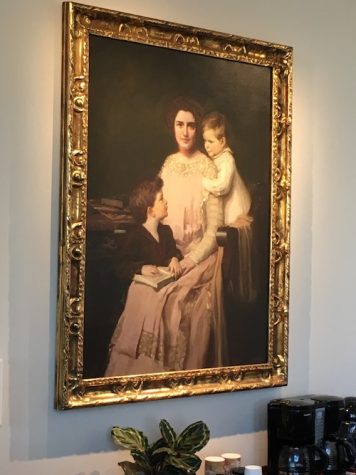
A picture of Chicagoan Clara Johnson adorns the
wall near the main office of the Francis Parker
School in San Diego.
When a new head of school arrived and decided not to subject “The Scribe” to prior review, Effress believes the magazine improved. “We’ve been able to report a bit more about the school itself instead of San Diego and national things, which is nice,” Effress said. “It also gives us a chance to talk more in-depth about things that maybe would have been a little more sensitive to parents who are reading the magazine or teachers.”
Effress, her co-editor Billy Harrington, and Grade 10 Dean and Upper School English teacher Nancy Anderson-Bruno publish “The Scribe” four times a year. The magazine, boasting long-form features, an arts and culture section, and more, is essentially a hybrid between the Parker Chicago publications “The Weekly” and “Scout” and a dramatic departure from its forerunner, “The Legend.”
With “The Scribe” in its relative infancy (about a decade old), a plethora of new facilities, and an influx of new teachers, few physical remnants exist to remind Cheskaty of the pre-renovation Linda Vista Campus. “Half of our teachers at Parker have been here for five years or fewer,” Cheskaty said. “As our older teachers retire, they’re being replaced by younger teachers with fewer years of experience, so I feel that our institutional knowledge is diminishing to a certain extent. The next person close to me is 28 years. Twenty-eight to my 44. That’s quite a jump.”
As our older teachers retire, they’re being replaced by younger teachers with fewer years of experience, so I feel that our institutional knowledge is diminishing to a certain extent.
— Barry Cheskaty
Regardless of the age of the teacher, most educators are teaching Advanced Placement (AP) classes as opposed to Parker Chicago, which has a virtually independent curriculum. Like Parker Chicago, its San Diego namesake does not calculate class rank but, unlike Parker Chicago, gives distinction to students who graduate in the top 10% of their class.
The school also crowns a valediction and a salutatorian, the students with the first and second highest academic records in their class. Parker Chicago is starting to embrace similar academic practices. Recently, Parker Chicago has created math and science classes inspired by but still fairly independent from the AP program. This shift from tradition indicates that although Parker San Diego started from the westward movement of ideas, maybe some ideas are traveling back east.
